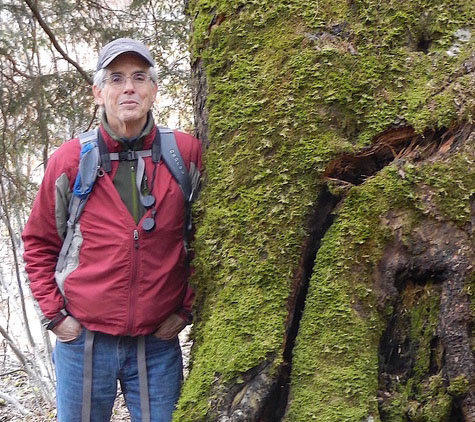JUDY WOODRUFF: And now tonight's Brief But Spectacular explores old growth trees and the natural history of Wisconsin's Northwoods. Author and naturalist John Bates takes us there. He's worked in the area for more than 30 years helping people understand the diversity and the beauty of nature and our place within it. Bates' most recent book is titled Our Living Ancestors.

JOHN BATES, Author, Our Living Ancestors: My interest in old growth took off in, oh, about 2003. I'd been walking in older forests, and found that they were quite rare and wondered why. Why did we cut so many down? They're a filter for air. They're a storage of carbon. They provide shade to our streams. I felt humility walking into these sites in a place where trees are 400 or 500 years old. I found myself feeling a deep gratitude that these trees were resilient enough to still be here. My job, as a naturalist, is to help people gain environmental literacy, so that they have a deeper understanding of place based on this enriched understanding of where they are. If you're standing under an old white pine here in Wisconsin that's 400 or 500 years old, you are standing underneath a tree that Native Americans had stood under. The trees are living tissue. They're not hardened amber. They're not footprints. They're not stories people have told with all the biases that we have as human beings. They're travelers through time. And standing next to them, you can get this feeling of time having taken place. And you can't find that in any other setting literally in the world. When you think about the history of Wisconsin, in 1830, we had our first census. There were 3,000 people. We became a state in 1848. And by 1870, there were one million people here. Every one of those people needed wood. And so we ended up cutting and then burning all of Northern Wisconsin. So, 99.8 percent has been cut. Rare to find a big white pine like this. This is a crown jewel of the Northwoods. Most of this land was sold on the dream of land that couldn't support farms. We have very poor soils, compared to Southern Wisconsin.
We also have this thing called winter, which lasts for five months. And we had almost no market. So, even if you could miraculously grow something, who were you going to sell it to? And so farmers went belly up. The land became tax-delinquent. And in the early '20s, 1930s, six million acres of Northern Wisconsin was made into public land, because we couldn't figure out what else to do with it. In my old age now, my job, as I understand it now, is to help people fall more deeply in love with the world. I can't think what else I'm here for. My name is John Bates, and this is my Brief But Spectacular take on connecting time through old growth forests.
JUDY WOODRUFF: And that was beautiful. And you can find all of our Brief But Spectacular segments online at PBS.org/NewsHour/Brief.












